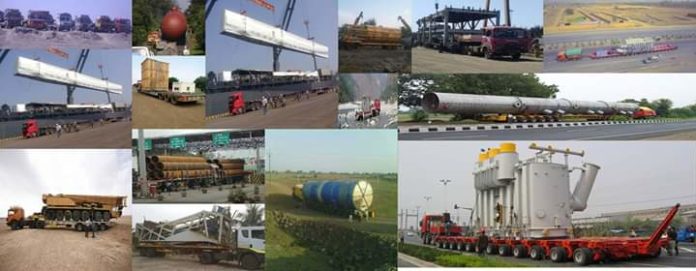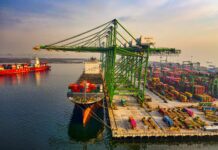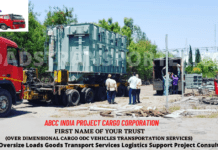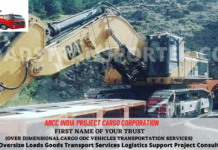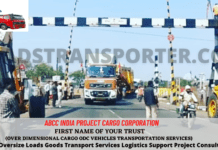Choose a Professional Service Provider for Trailer Truck Transportation Service in India
Are you looking for a reliable trailer Truck transportation India? Getting confused with so many options? If yes, then choose us as your partner and we will help you in Transporting trailers to your required destination. The shipment of trailers is a quite challenging task which requires expert’s knowledge and experience. The transport company you choose must have the capability to ship your vehicles safely to the right place. However, here lies the big difficulty for customers to choose such companies.
If you are running a business whose base is cargo Transporting, then your first and foremost task is to choose a professional cargo Transporting company who holds many years of experience and knowledge in this field. Always remember, only a professional cargo Transporting company can offer the best trailer trucks transportation services as per customers’ requirements. So, you have to focus on choosing a professional trailer transportation in India.
But, it would be no more a hectic job for you. At ABCC India, we offer the best trailer transportation service through our huge network base. Our company hires experts from all over India who hold in-depth knowledge and expertise in handling this sort of projects. They efficiently transport heavyweight trailers to its desired location. All you have to do is to ask for quotes and then confirm your assignment. Our experts will handle the rest of the work. Isn’t it so simple? Yes! It is simple with none other than ABCC India. We hire the right people for the right work.
But, now the question is how you can choose the right service provider. How can you become sure that you have made the right selection? With the growing demand cargo Transporting services, the number of Cargo Company has also increased leading to a difficult situation for customers to choose the right option as per their requirements. Almost all companies claim to offer the best service, but unfortunately only a few are capable of offering so and thus, you need to make the selection very carefully. A professional cargo company has some basic features and in this blog, you come to know about them which will help you making the right decision. So, without wasting much time, let’s now discuss the features that a professional company must have. Along with it, when you will select the right service provider, you can expect to get the best SPMT mechanical lowboy lowbed plainbed highbed flatbed hydraulics multi axles trailer truck transportation service as per your need.
Features that a Professional Project Cargo Company must have for Trailer Transportation India
Must provide Heavy Hauling material shifting service
When you are searching for the right trailer transportation company in India, always check out whether the company offers heavy material shifting service. All professional companies offer this services along with low bed trailer service, semi low bed trailer service, high bed trailer service, flat bed trailer service and so on. If your company offers Oversized load heavy haulage ODC Cargo consignment material transportation shifting service, assume, you have made the right selection and thus, you can expect to get the best trailer transportation service as per your need. ABCC India is one of the leading cargo Transporting service providers of the country which offers a range of trailer trucks transportation services. Starting from heavy material shifting service to sensitive goods transportation, we offer all types of services to cater to the varied requirements of the customers.
Overload weight consignment transportation service

Goods that are excessive heavy in weight are termed as overweight consignment. Shifting such types of goods is no less than a challenging task to a Transporting service provider as it requires effective handling skill and efficient staff. If a cargo company handles such types of assignments efficiently, assume they are competent enough of offering the best trailer truck transportation services. At ABCC India, customers can avail the best overweight consignment transportation services at effective prices. We have an efficient team of professionals who hold many years of experience and knowledge in this field and therefore, can better handle such types of assignments.

Global clientele base (Indo Saarc Company MNC Companies)
This is an important factor to consider when you are looking for the right project cargo Transporting service provider. a professional service provider must have a global clientele base that indicates its reliability and the network of happy clients. Backed by more than 45+ years of experience in this field, ABCC India has successfully established a global clientele base across the nation which means we provide our trailer transportation services to all corners of the country and our customers are very much satisfied with our services. Whether it is about shifting heavyweight goods or sensitive material transportation, we, at ABCC India offers all range of services in all corners of the country.
Experienced all types of trailer transportation service provider
Whether it is in the cargo industry or any other sector, the work experience of the company always matters. Make sure, your service provider holds not less than 10 years of hands-on experience in the cargo industry. This indicates the company’s work efficiency and knowledge in this sector. ABCC India has more than 40+ years of experience in this field and thus, we can better understand our clients’ requirements and offer services accordingly. To us, our customers’ satisfaction is our privilege and to achieve that, we try all possible means.
Customised trailer truck trolley vehicle solution
This is an important factor to consider when you are looking for the right cargo transportation company in India. Always make sure that the company you choose for handling your cargo assignment must offer a range of cargo vehicle option as per the project’s requirements. This will not only help to save your money but also you can avail specific solution as per your projects’ requirements. Isn’t it a great option? Of course it is and this is one of the reasons why you should always go for choosing a customised vehicle service provider. Being a leading cargo Transporting company in India, ABCC India offers customised solutions to its customers. In fact, you will be glad to know that we own more than 770 vehicles which make us capable of offering specific solutions to our customers as per their need. In short, ABCC India is a one-stop solution for all your cargo requirements.
On-time delivery service

This is one of the important factors to consider while you are looking for the right cargo company. In the cargo industry, timely delivery service is something without which a cargo company cannot run its business in a seamless manner. Anyone who is operating in this field for a year or month will surely agree to this point. Therefore, if you want to keep your business run in a seamless manner, makes sure it assures you on-time delivery service. Being a professional cargo Transporting service provider in India, we assure our customers on-time Transporting service which shows professionalism and experience in this field. our drivers are skilled enough of offering timely delivery services to any corners of the country within the deadline. However, if you are wondering about the safe transportation of goods, you will be glad to know that our quality testing professionals personally scrutinize each and every assignment to make sure that they are transported in the safest manner to their desired destination within the deadline.
Real-time tracking facility for all types of project cargo movement

This is an advanced tracking tool which has been implemented in recent days to offer a helping hand to customers. with this tracking tool, customers can easily track the location of their shipment from the comfort of their home and without making frequent calls to the customer service department. This is an advanced tool which has been implemented in almost all professional cargo companies and ABCC India is also not an exception in this field. We have implemented this tool in order to offer convenience to our customer so they can track the location of their shipments easily and know its expected delivery time. In critical assignment, we even provide phone numbers of our drivers so customers can easily contact them and know the position of their shipment.
Offshore Sea Port transportation facilities

Sea Port transportation service is an important part of the Project cargo industry and this service can only be offered by a professional Transporting service provider. Be it transferring office to a new port or portable house, an expert hand is required to accomplish such types of assignments efficiently. A professional cargo company who holds many years of experience in this field can provide you the type of port transport facility you require. ABCC India, being a leading cargo Transporting company of the nation offers port transport facilities to its customers. our services are high demanding both in the commercial and domestic sector and this is the reason why we are the most preferred cargo Transporting service provider of the nation.

Specialist for transportation and logistic procurement and tendering
When you are looking for the right trailer truck transportation in India, make sure the company offer procurement and tendering service as well. A professional cargo Transporting company provides both procurement and tendering service which is an integral part of the cargo industry. This service is highly demanding in the commercial sector and thus, you have to hire a company that offers this service as well. ABCC India is considered as the specialist for procurement and tendering service. Our professionals hold special knowledge in the category and thus, you can expect to get the best procurement and tendering service along with trailer transportation.
Well, these are the most important features or qualities that a professional cargo Transporting service provider must have. If your chosen cargo company offers all these services assume you have made the right selection as per your need. ABCC India, being the leading cargo Transporting service provider of the nation assures to provide the best trailer transportation service to customers as per their requirements. We believe that every assignment has its own requirements and to accomplish them in the best manner, it is important that specific solution should be given to each of them. We do exactly the same thing here. We study every project before taking up them and then provide strategic solutions to accomplish them in the best way.
We offer a range of trailer transportation services in India to our customers. These are as follows
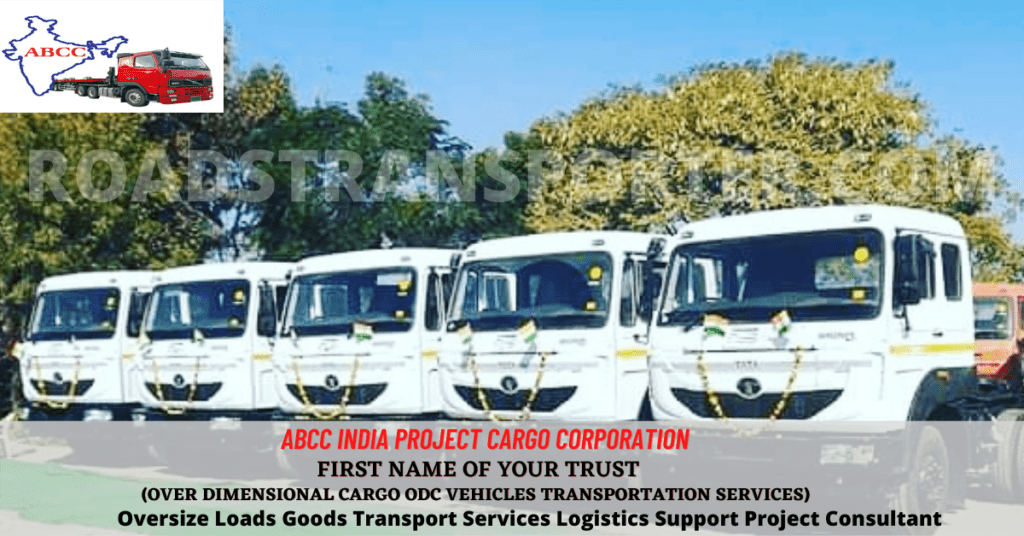
- Transformer transportation Service India
- Tank transportation Service India
- East India transportation Service India
- Windmill transportation Service India
- West India transportation Service India
- North India transportation Service India
- South India transportation Service India
- Pipe line transportation Service India
Why choose ABCC India for Trailer transportation over other Companies?
Reliable and Nationwide Network
ABCC India is a leading transport and logistics company in India serving the people of the nation for more than 45+ years. Our experts always follow a technology-oriented approach that makes us capable of handling any type of project. We use advanced tools to track the vehicle throughout the entire shipment process. This tool is called real-time tracking system that enables customers to constantly acquire necessary information about the location of the shipment.
Shipment across the nation Indo-saarc countries trailer transportation service
Wherever you want to ship your goods, ABCC India gives you the assurance of the safest transportation even for long distances. When you are working with us, you don’t need to think about the destination and the current location. Our powerful network covers all corner of India. All you have to do is to let us inform your requirements and we will try our best to cater to your needs. We provide trailer transportation all over India.
Get the transportation Services you Need
At ABCC India, you can avail all types of transportation service as per your requirements. From real-time tracking facility to instant quotes, our process of booking is very simple to ensure convenience of our customers. We make sure that you face no hurdles during the booking process. Our logistics service will pick up your trailers from your mentioned location and deliver it to its desired location within our given time frame.
Expert Heavy hauling project cargo handling
At ABCC India, we use advanced and the most up-to-date technology for handling heavy loaded trailers easily. Being a leading company in the Indian market, we offer the best rate to our customers. Our modernized software system and skilled management team are able to study the market rate from time to time and thus, offer the best competitive price which you can’t expect to get anywhere else. Along with transportation service, our professionals also offer dispatch and excellent customer service.
24X7 Indo Saarc Trailor trucks transportation Customer Support sercive
Your satisfaction is our first priority. We aim at offering round the clock customer support to our highly esteemed clients. Our staffs are always reachable and ready to support customers 24×7. If you have any query or concerns, feel free to contact our customer service department at any time, we will be happy to assist you.
So, whenever you require reliable and safe trailer transportation in India, contact us. We are always ready to help you out.
If you wish to avail our wide range of trailer transportation services in India, just give us a call. Our representatives will attain you shortly.
Click and follow our page for regular upgraded and latest news about Trailer Truck Transportation Service :- Please Click
Trailer Available in India For Heavy Haulage Oversize Load Road Transportation Service India
The first trailer transport service in India was started by the Shipping Corporation of India (SCI) in 1963. SCI is a government-owned company that provides shipping services to India. The trailer transport service was started to provide a more efficient way to transport cargo between ports and inland destinations.
The trailer transport service was initially operated between the ports of Bombay (now Mumbai) and Calcutta (now Kolkata). The trailers were pulled by trucks and could carry up to 20 tonnes of cargo. The service was initially popular with exporters and importers who needed to move large quantities of goods between the ports and inland destinations.
The trailer transport service was expanded in the following years and new routes were added. By the early 1970s, the service was operating on a network of routes across India. The service also became popular with other industries, such as the construction industry, which needed to move heavy machinery and equipment.
The trailer transport service has played a major role in the development of the Indian economy. It has helped to improve the efficiency of transportation and has made it easier to move goods around the country. The service has also helped to promote trade and commerce.
Today, the trailer transport service is a major mode of transportation for cargo in India. It is operated by a number of private companies as well as the SCI. The service is available on a nationwide network of routes and can carry a variety of cargo, including containers, machinery, and equipment.
20 ft/ 30ft Flatbed Trailer Truck
(For General Heavy Loading) – 20/30X8X7 – Feet
Double axle weight capacity – 22 MT
Triple axle weight capacity – 28 MT
Double Crown(Depression) weight capacity – 33 MT
Ground clearing loading height – 4 Foot
4 Year Annual Contract Monthly Rent- 1,80,000

ABCC India Project Cargo Corporation provides 20 and 30 feet trailer truck transportation services for steel plates and coil transport. Steel plates and coils are a type of project cargo, which means that they are large, heavy, and/or oversize. ABCC India Project Cargo Corporation has the experience and expertise to safely and efficiently transport this type of cargo.
40 Ft Half Body Side Wall Trailer Truck
40X8X3 Feet
Triple axle weight capacity – 28 MT
Double Crown(Depression) weight capacity – 32 MT
Ground clearing loading height – 4 Foot
4 Year Annual Contract Monthly Rent- 2,30,000


ABCC India Project Cargo Corporation provides body side wall trailers for general goods transportation, including steel, cement, pipes, pop dust, stone, etc. These trailers are designed to protect the cargo from the elements and to prevent damage during transportation.
The body side wall trailers from ABCC India Project Cargo Corporation are made of high-quality materials and are built to last. They are also equipped with features that make them safe and easy to use, such as:
- Sidewalls that can be raised and lowered to allow for easy loading and unloading
- Roofs that can be closed to protect the cargo from the elements
- Doors that can be locked to prevent theft
- Wheels that are made of durable materials and can withstand rough terrain
ABCC India Project Cargo Corporation also offers a variety of other services related to the transportation of general goods, such as:
- Route planning and optimization
- Loading and unloading assistance
- Insurance
- 24/7 customer support
If you are looking for a reliable and experienced company to transport your general goods, ABCC India Project Cargo Corporation is a good option to consider. They have the experience, expertise, and equipment to safely and efficiently transport your goods.
Here are some of the benefits of using body side wall trailers for general goods transportation:
- They provide protection from the elements.
- They prevent damage to the cargo during transportation.
- They are easy to load and unload.
- They are safe and secure.
- They are versatile and can be used to transport a variety of goods.
If you are considering using body side wall trailers for general goods transportation, I recommend that you contact ABCC India Project Cargo Corporation to discuss your needs. They can help you choose the right trailer for your application and provide you with a quote for transportation services.
High Bed Flatbed Trailer
Trailer – 40 ft to 80ft X8X7
Double axle weight capacity – 20 MT
Triple axle weight capacity – 27 MT
Double Crown(Depression) weight capacity – 32 MT
Ground clearing loading height – 5 Feet
4 Year Annual Contract Monthly Rent- 2,00,000


ABCC India Project Cargo Corporation provides HighBed Flatbed Trailers for general goods transportation, including steel, cement, pipes, pop dust, stone, etc. These trailers are designed to carry heavy and oversize cargo.
The HighBed Flatbed Trailers from ABCC India Project Cargo Corporation are made of high-quality materials and are built to last. They are also equipped with features that make them safe and easy to use, such as:
- A high bed that can accommodate tall and heavy cargo
- A flatbed that allows for easy loading and unloading
- Siderails that can be raised and lowered to secure the cargo
- Wheels that are made of durable materials and can withstand rough terrain
ABCC India Project Cargo Corporation also offers a variety of other services related to the transportation of general goods, such as:
- Route planning and optimization
- Loading and unloading assistance
- Insurance
- 24/7 customer support
If you are looking for a reliable and experienced company to transport your general goods, ABCC India Project Cargo Corporation is a good option to consider. They have the experience, expertise, and equipment to safely and efficiently transport your goods.
Here are some of the benefits of using HighBed Flatbed Trailers for general goods transportation:
- They can carry heavy and oversize cargo.
- They are easy to load and unload.
- They are safe and secure.
- They are versatile and can be used to transport a variety of goods.
If you are considering using HighBed Flatbed Trailers for general goods transportation, I recommend that you contact ABCC India Project Cargo Corporation to discuss your needs. They can help you choose the right trailer for your application and provide you with a quote for transportation services.
Semi Low Bed
Trailer – 40 ft to 80ft X8X7 – Feet Double axle weight capacity – 20 MT
Triple axle weight capacity – 27 MT
Double Crown(Depression) weight capacity – 32 MT
Ground clearing loading height – 4 Foot
4 Year Annual Contract Monthly Rent- 2,10,000


ABCC India Project Cargo Corporation provides Semi Low Bed Trailer for +15 ton all types machinery and ODC cargo transportation maximum 10 feet height and width.
The semi low bed trailer is a type of trailer that is designed to carry heavy and oversize cargo. It has a lower profile than a traditional flatbed trailer, which makes it easier to load and unload. The trailer can accommodate machinery and ODC cargo with a maximum weight of 15 tons, a maximum height of 10 feet, and a maximum width of 10 feet.
ABCC India Project Cargo Corporation has a fleet of semi low bed trailers that are available for rent in all major cities in India. They can also provide transportation services for semi low bed trailers.
The cost of renting a semi low bed trailer from ABCC India Project Cargo Corporation will vary depending on the size of the trailer, the distance you need to transport it, and the duration of the rental. You can expect to pay anywhere from Rs. 20,000 to Rs. 50,000 per day for a semi low bed trailer.
To rent a semi low bed trailer from ABCC India Project Cargo Corporation, you can contact them through their website or call their customer service number. They will need to know the weight and dimensions of your cargo, the distance you need to transport it, and the date you need the transportation.
Lowboy hydraulic multi axle Low Bed
(Mechanical)Trailer – 40 ft to 60 ft X8X7 – Feet
Double axle weight capacity – 20 MT
Triple axle weight capacity – 27 MT
Double Crown(Depression) weight capacity – 32 MT
Ground clearing loading height – 3 Foot
4 Year Annual Contract Monthly Rent- 3,00,000



ABCC India Project Cargo Corporation provides Low Bed Trailer for Over dimensional cargo transportation service all over India. They have a fleet of low bed trailers that are specifically designed to transport oversized and heavy loads.
Low bed trailers are a type of trailer that has a lower deck than a standard trailer. This allows them to accommodate loads that are too tall or wide to fit on a standard trailer. Low bed trailers can also be equipped with hydraulic ramps, which makes it easier to load and unload oversized loads.
ABCC India Project Cargo Corporation can transport over dimensional cargo of all types, including:
- Construction equipment
- Machinery
- Wind turbines
- Oil rigs
- Heavy vehicles
- Steel structures
- Other oversized and heavy loads
The cost of transporting over dimensional cargo with ABCC India Project Cargo Corporation will vary depending on the size and weight of the load, the distance it needs to be transported, and the specific requirements of the project. You can expect to pay anywhere from Rs. 50,000 to Rs. 100,000 or more for over dimensional cargo transportation.
To get a quote for over dimensional cargo transportation from ABCC India Project Cargo Corporation, you can contact them through their website or call their customer service number. They will need to know the weight and dimensions of your load, the distance you need to transport it, and the date you need the transportation.
16 Wheeler Lowboy hydraulic multi axle
Low Bed (Mechanical)Trailer Axle Trailer – 25ft /30 ft X8X7 – Feet
Weight Capacity – (Min – 30 to Max – 50)MT
Ground clearing loading height – 3 Foot
4 Year Annual Contract Monthly Rent- 3,80,000
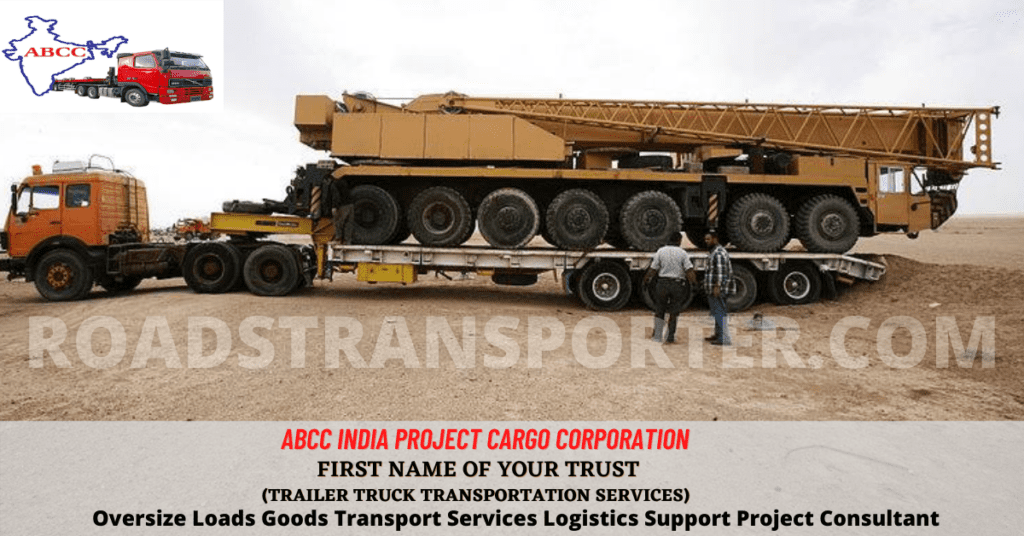
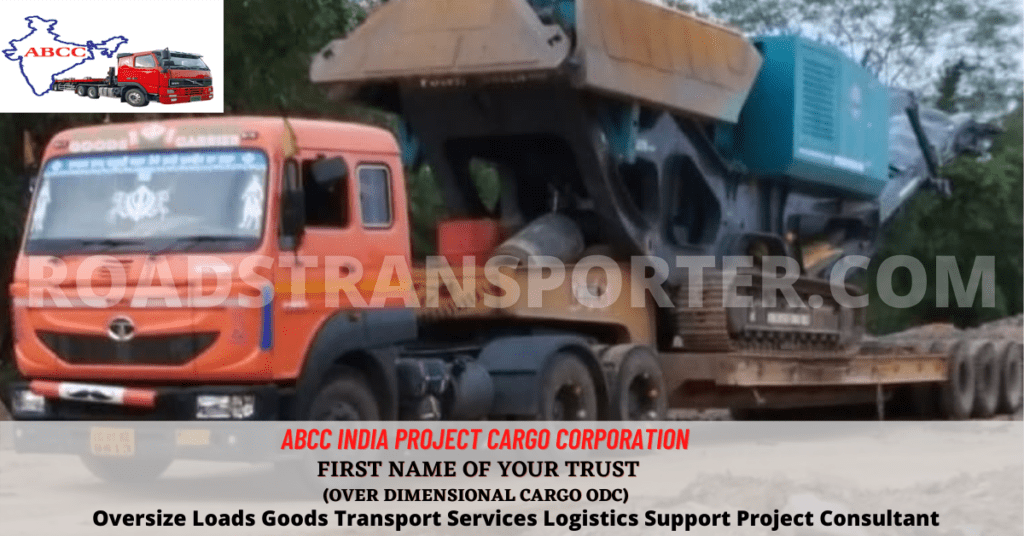
ABCC India Project Cargo Corporation provides 16 wheeler LowBed Trailer for Over dimensional cargo transportation.
A 16 wheeler lowbed trailer is a type of trailer that is designed to carry heavy and oversize cargo. It has a long wheelbase and a low deck, which allows it to accommodate loads that are too tall or wide to fit on a standard trailer.
ABCC India Project Cargo Corporation has a fleet of 16 wheeler lowbed trailers that are available for rent in all major cities in India. They can also provide transportation services for 16 wheeler lowbed trailers.
The cost of renting a 16 wheeler lowbed trailer from ABCC India Project Cargo Corporation will vary depending on the size of the trailer, the distance you need to transport it, and the duration of the rental. You can expect to pay anywhere from Rs. 50,000 to Rs. 100,000 per month for a 16 wheeler lowbed trailer.
To rent a 16 wheeler lowbed trailer from ABCC India Project Cargo Corporation, you can contact them through their website or call their customer service number. They will need to know the weight and dimensions of your cargo, the distance you need to transport it, and the date you need the transportation.
Modular Hydraulic Multi Axle Trailers
Size – As Per Client Requirement
(Totally Customized)
Ground clearing loading height – 3.3/4 Feet
4 Year Annual Contract Monthly Rent-
Per Axle – 1,50,000
Prime Mover hauling Truck – 9,80,000



ABCC India Project Cargo Corporation provides Modular Hydraulic Multi Axle Trailers for Over dimensional cargo transportation and heavy haulage trucking for oversizeload carry service all over India.
Modular hydraulic multi-axle trailers are a type of trailer that is designed to transport oversized and heavy loads. They are made up of multiple sections that can be connected together to accommodate loads of any length. This makes them a versatile option for transporting oversize loads of different sizes.
The modular hydraulic multi-axle trailers from ABCC India Project Cargo Corporation are equipped with hydraulic rams, which allow the sections of the trailer to be raised and lowered. This makes it easy to load and unload oversized loads. The trailers are also equipped with state-of-the-art safety features, such as side guards and load binders, to prevent the load from shifting during transportation.
ABCC India Project Cargo Corporation can transport over dimensional cargo of all types, including:
- Construction equipment
- Machinery
- Wind turbines
- Oil rigs
- Heavy vehicles
- Steel structures
- Other oversized and heavy loads
The cost of transporting over dimensional cargo with ABCC India Project Cargo Corporation will vary depending on the size and weight of the load, the distance it needs to be transported, and the specific requirements of the project. You can expect to pay anywhere from Rs. 50,000 to Rs. 100,000 or more for over dimensional cargo transportation.
To get a quote for over dimensional cargo transportation from ABCC India Project Cargo Corporation, you can contact them through their website or call their customer service number. They will need to know the weight and dimensions of your load, the distance you need to transport it, and the date you need the transportation.
Other Special Vehicles for Heavy Hauling Over sized Loads
ABCC India Project Cargo Corporation provides all types of modified trucks as per load size demand. They have a team of experienced engineers and technicians who can modify trucks to meet the specific needs of their customers.
Some of the types of modified trucks that ABCC India Project Cargo Corporation can provide include:
- Low bed trucks: These trucks are designed to carry oversized and heavy loads. They have a low deck that allows them to accommodate loads that are too tall or wide to fit on a standard truck.
- Side lifter trucks: These trucks are equipped with hydraulic rams that lift the side of the truck bed, making it easier to load and unload oversized loads.
- Articulated trucks: These trucks are made up of two or more sections that can be connected together to accommodate loads of any length.
- Expandable trucks: These trucks have a telescopic bed that can be extended to accommodate loads of different sizes.
- Special purpose trucks: ABCC India Project Cargo Corporation can also modify trucks to meet the specific needs of their customers, such as trucks for transporting hazardous materials or trucks for transporting livestock.
The cost of modifying a truck will vary depending on the type of modification and the size and weight of the load that the truck will be carrying. You can expect to pay anywhere from Rs. 50,000 to Rs. 100,000 or more for modifying a truck.
To get a quote for modifying a truck from ABCC India Project Cargo Corporation, you can contact them through their website or call their customer service number. They will need to know the type of modification you need, the size and weight of the load you will be carrying, and the date you need the modification.













ABCC India Project Cargo Corporation provides SPMT trailers as per demand. SPMT stands for Self-Propelled Modular Transporter. It is a type of trailer that is designed to transport oversized and heavy loads. SPMT trailers are made up of multiple modules that can be connected together to accommodate loads of any length. This makes them a versatile option for transporting oversize loads of different sizes.
ABCC India Project Cargo Corporation can provide SPMT trailers with a variety of features, including:
- Different axle configurations to accommodate different loads
- Hydraulically operated modules for easy loading and unloading
- State-of-the-art safety features to prevent the load from shifting during transportation
The cost of an SPMT trailer will vary depending on the size and weight of the load that it will be carrying, the number of modules, and the features that are included. You can expect to pay anywhere from Rs. 50 lakhs to Rs. 100 lakhs or more for an SPMT trailer.
To get a quote for an SPMT trailer from ABCC India Project Cargo Corporation, you can contact them through their website or call their customer service number. They will need to know the size and weight of the load you will be carrying, the number of modules you need, and the features you want included.
